What Exactly Is a Chemotherapy Hypersensitivity Reaction?
When you get chemotherapy, your body is fighting cancer. But sometimes, it fights the medicine too. A chemotherapy hypersensitivity reaction is when your immune system overreacts to a chemo drug, treating it like an invader. This isn’t just nausea or fatigue-it’s an allergic response that can start with a tickle in your throat and turn into trouble breathing in minutes.
It’s not rare. About 5% of people on chemotherapy have some kind of allergic reaction. For some drugs, like carboplatin or paclitaxel, the risk grows the more you get treated. After six doses, your chance of a reaction jumps from less than 1% to over 6%. By the eighth or ninth infusion, it’s nearly one in three. That’s why nurses watch you closely-not just on day one, but every single time you come in.
How Do You Know It’s a Reaction? The Signs by Body System
These reactions don’t look the same for everyone. Some people get a rash. Others feel like they’re going to pass out. The symptoms depend on which part of your body is reacting-and how fast.
- Head and neck: Itchy eyes, swollen lips or tongue, nasal congestion, a strange metallic taste in your mouth.
- Respiratory: Wheezing, chest tightness, coughing, shortness of breath. This is the most dangerous sign. If you can’t catch your breath, it’s time to act.
- Cardiovascular: Dizziness, fainting, rapid heartbeat, low blood pressure. Systolic pressure dropping below 90 mmHg is a red flag.
- Gastrointestinal: Nausea, vomiting, cramps, diarrhea. These can be mistaken for chemo side effects, but they often come with other symptoms.
- Skin: Flushing (sudden redness), hives, itching. About 72% of people report itching. It’s the most common sign.
- Neurological: Anxiety, a feeling that something terrible is about to happen. This isn’t just fear-it’s your body’s alarm system.
- General: Chills, fever, sweating. These come from cytokines, not infection.
Some reactions start mild-just a little redness on your chest-and get worse fast. Others hit hard right away. Either way, if you feel anything unusual during or after your infusion, speak up. Even if you’re not sure.
When Do Reactions Happen? Timing Matters
Most reactions happen during the infusion or within the first hour after. But some show up hours later-or even the next day. That’s why you’re asked to stay in the clinic for at least 30 minutes after your treatment ends.
For most chemo drugs, the first reaction happens early-often after the first or second cycle. But carboplatin is different. It builds up in your system. You might get through five cycles fine, then suddenly react on the sixth. That’s because your immune system is learning to recognize the drug as a threat over time.
Platinum drugs (carboplatin, cisplatin, oxaliplatin) and taxanes (paclitaxel, docetaxel) are the biggest culprits. But monoclonal antibodies like trastuzumab and rituximab can trigger reactions too. Even if you’ve had no problems before, don’t assume you’re safe next time.
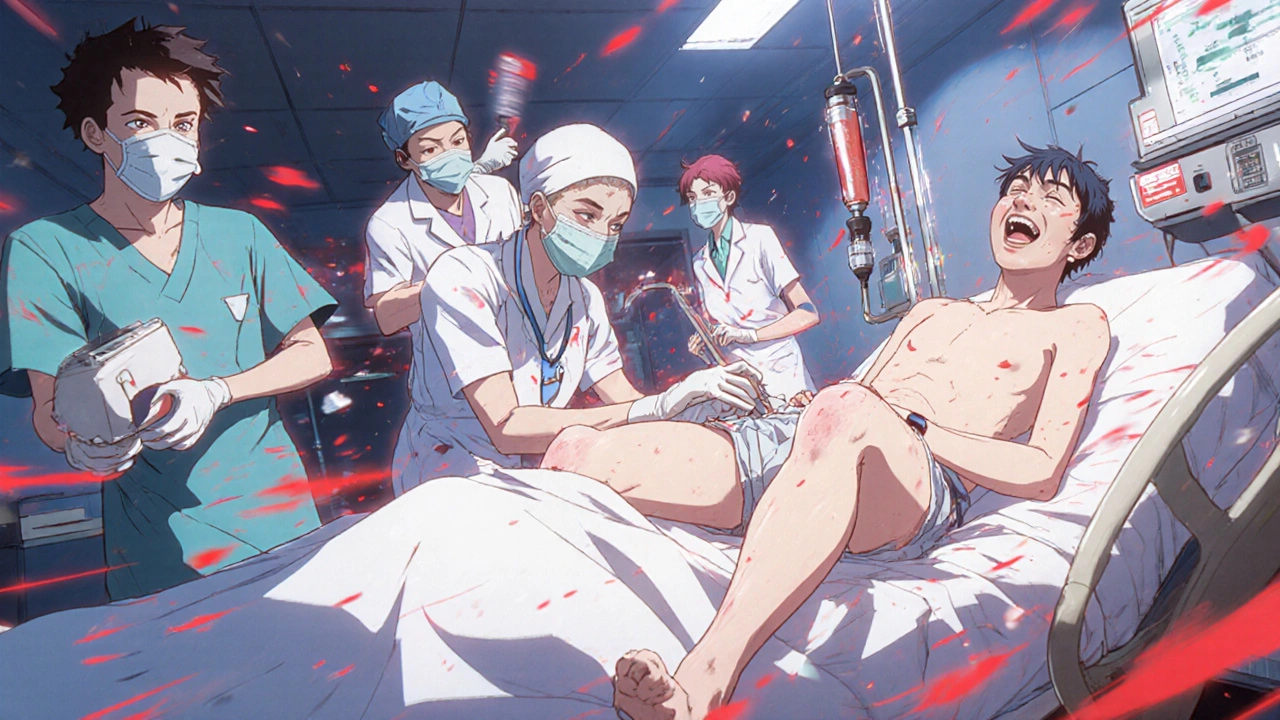
What Do Doctors Look For to Diagnose It?
There’s no single blood test that says, “Yes, this is a chemo allergy.” Diagnosis is based on what you feel, what the nurse sees, and when it happens.
Doctors use the same rules for anaphylaxis that apply to bee stings or peanuts: sudden onset, involving skin or respiratory or cardiovascular systems. If you have low blood pressure and wheezing? That’s anaphylaxis. If you have hives and mild nausea? That’s a moderate reaction.
Lab tests can help confirm it. High tryptase levels in your blood (above 11.4 ng/mL) suggest mast cells released histamine. Eosinophils in your blood may rise. Specialized tests like basophil activation can show if your immune cells are reacting to the drug. But these aren’t done right away-they’re for planning future treatments.
Doctors also rule out other things. Is it sepsis? Asthma flare-up? A reaction to contrast dye you got earlier? The symptoms overlap. That’s why timing and context matter.
What Happens If You Have a Reaction? The Protocol
Every oncology unit should have an emergency plan. Here’s what it looks like, step by step.
Mild Reaction (Grade 1):
- Flushing, mild rash, localized itching
- Stop the infusion
- Give diphenhydramine (Benadryl) 25-50 mg IV
- Give dexamethasone 10-20 mg IV
- Monitor vitals for 30 minutes
- If symptoms clear, restart infusion slowly
Moderate Reaction (Grade 2):
- Widespread hives, facial swelling, mild shortness of breath
- Stop infusion immediately
- Give antihistamines and steroids
- Start oxygen if needed
- Wait until symptoms fully resolve
- Restart at half the original rate, over a longer time
Severe Reaction (Grade 3-4) or Anaphylaxis:
- Low blood pressure, wheezing, swelling of throat, chest pain, fainting
- STOP THE INFUSION. NOW.
- Give epinephrine 0.3-0.5 mg intramuscularly (thigh)
- Call for help-this is a code situation
- Start IV fluids
- Give oxygen
- Position you flat with legs raised
- Repeat epinephrine every 5-15 minutes if needed
- Intubation may be needed if airway is swelling
Epinephrine is the only thing that stops anaphylaxis. Antihistamines and steroids help with symptoms, but they don’t save your life. That’s why every chemo room must have epinephrine on hand-not in a cabinet, but within reach.
Can You Still Get Chemo After a Reaction?
Yes-but only with a plan. If you had a mild reaction and need to keep using the same drug, your team may do a desensitization protocol.
This means giving you the drug in tiny, slowly increasing doses over 4 to 12 hours. You’re watched constantly. Nurses check your breathing, blood pressure, and heart rate every 5-15 minutes. You’re given antihistamines and steroids before and during.
It’s not risk-free. But for many people, it’s the only way to keep fighting cancer. If you had a severe reaction-especially with breathing or blood pressure trouble-your team will likely switch you to a different drug. Some drugs, like liposomal doxorubicin or L-asparaginase, are more likely to cause reactions. If you reacted to one, they’ll avoid similar ones.
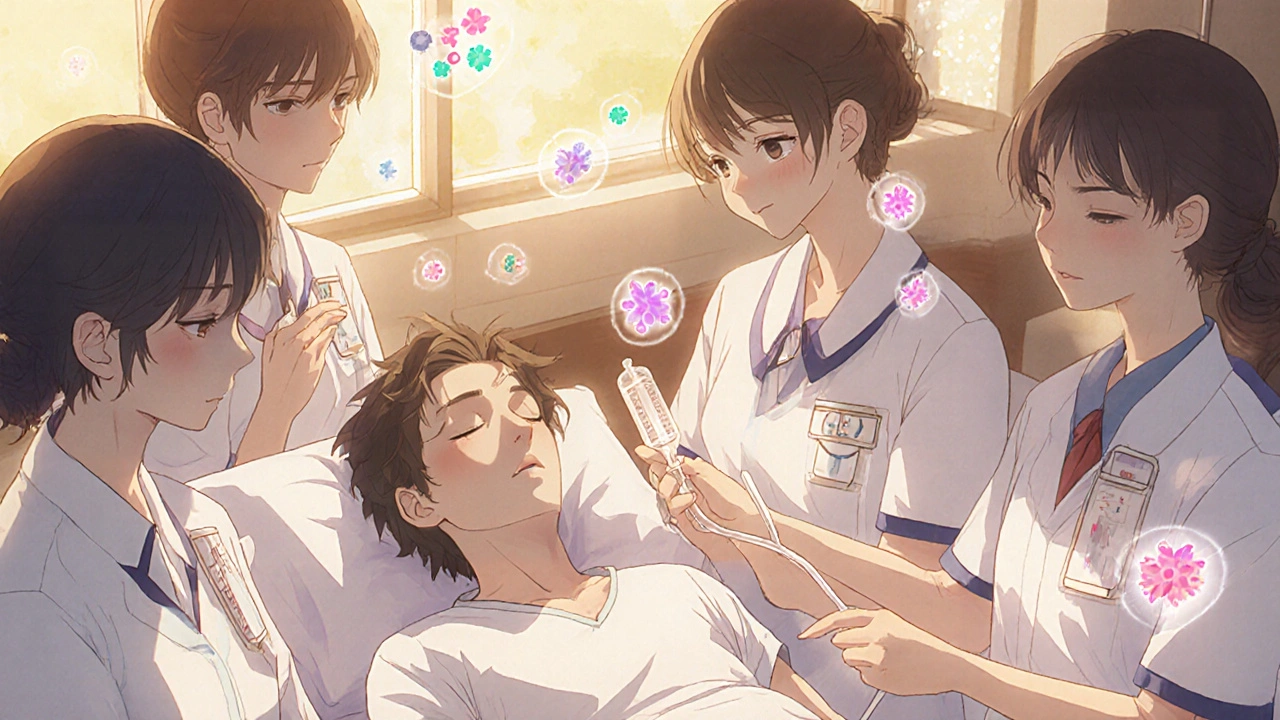
How to Prevent Reactions Before They Start
Prevention isn’t luck-it’s science. For high-risk drugs, premedication is standard.
For taxanes (paclitaxel, docetaxel), you’ll usually get:
- Dexamethasone 20 mg IV-12 hours and again 6 hours before
- Diphenhydramine 50 mg IV-30 minutes before
- Famotidine 20 mg IV-30 minutes before
This combo cuts reaction rates by more than half. For carboplatin, some centers give antihistamines and steroids too, even if you’ve never reacted before. It’s a gamble-but the risk of a reaction later is high.
Infusion speed matters. Slowing down the drip can prevent reactions. If you had a mild reaction before, they’ll give the next dose over 90 minutes instead of 30.
What You Can Do: Patient Responsibilities
You’re not just a patient. You’re part of the team.
- Always tell your nurse if you’ve had a reaction before-even if it was years ago.
- Report anything unusual: a funny taste, a tingling hand, a sudden chill. Don’t wait.
- Know your drug names. Write them down. Ask what you’re getting each time.
- Don’t assume you’re safe just because you’ve had five good infusions. Carboplatin doesn’t care.
- If you feel symptoms after leaving the clinic, go to the ER. Don’t wait.
Most people who survive a severe reaction say the same thing: “I didn’t want to bother anyone.” Don’t make that mistake. Your voice can save your life.
What Happens After a Reaction?
Your oncology team will document everything. They’ll update your chart, flag your file, and plan for next time.
You may be referred to an allergy specialist for testing. Some centers do skin tests or blood tests to confirm which drug caused it. That helps avoid it in the future.
If you need to switch drugs, your team will choose an alternative with a lower risk. For example, if you reacted to paclitaxel, they might use nab-paclitaxel or docetaxel instead. Not all taxanes are the same.
And if you’re told you can’t have that drug again? That’s not a failure. It’s protection.
Can chemotherapy hypersensitivity reactions be fatal?
Yes, but it’s rare. Less than 0.5% of reactions lead to cardiac arrest or death. Most deaths happen because the reaction wasn’t recognized fast enough or epinephrine wasn’t given immediately. That’s why training and preparedness matter so much. Every clinic should have epinephrine, oxygen, and staff trained to act within minutes.
Are chemotherapy hypersensitivity reactions the same as chemo side effects?
No. Side effects like nausea, hair loss, or fatigue are direct effects of the drug on healthy cells. Hypersensitivity reactions are immune system overreactions-they’re allergic. You can have both at the same time, but they need different treatments. An antinausea pill won’t stop hives or low blood pressure.
Why do some people react to chemo and others don’t?
It’s not fully understood. Genetics may play a role. Some people have immune systems that are more likely to overreact to certain drugs. Repeated exposure increases risk-especially with platinum drugs. It’s not about being “allergic” from birth. It’s about your body learning to respond over time.
Should I avoid all chemo if I had one reaction?
No. Only the specific drug that caused the reaction is usually avoided. Many people go on to get other chemo drugs safely. Desensitization can even let you return to the same drug under controlled conditions. The goal is to keep you alive and treat your cancer-not to stop treatment entirely.
Can I get a reaction to chemo even if I’ve never had allergies before?
Absolutely. Many people who have chemo hypersensitivity reactions have never had hay fever, peanut allergies, or bee sting reactions. This is a different kind of immune response. It’s triggered by the drug itself, not by your past allergy history.
What if I’m not sure if it’s a reaction or just tired?
If you’re unsure, tell your nurse. The most common mistake is waiting. A slight itch, a warm flush, a funny taste-these are early signs. Nurses are trained to treat even small symptoms seriously. It’s better to be checked out than to wait until you can’t breathe.

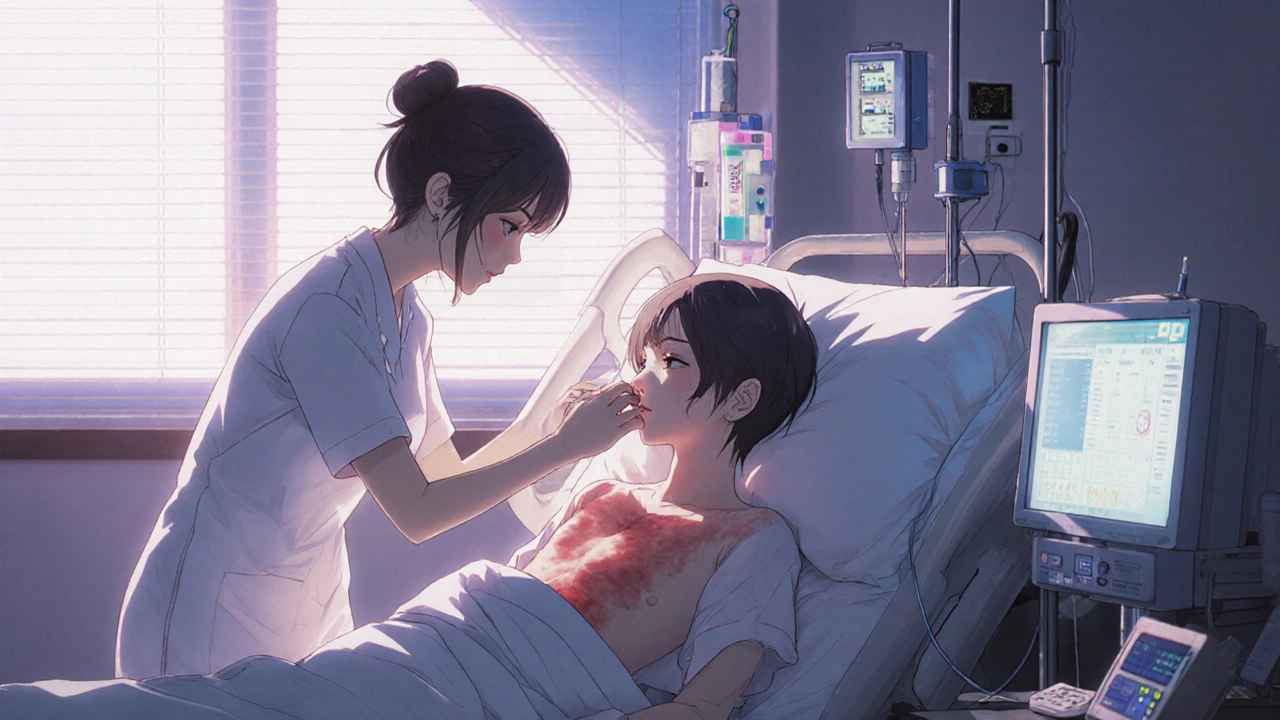
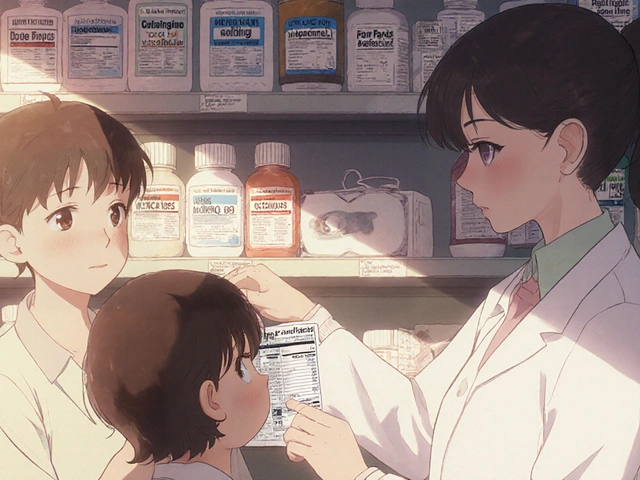

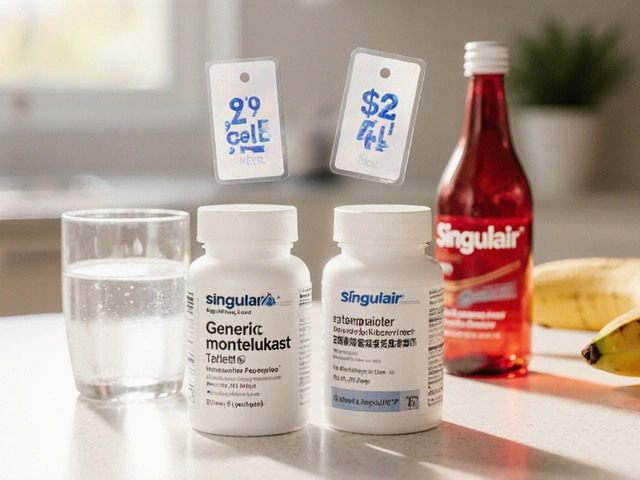

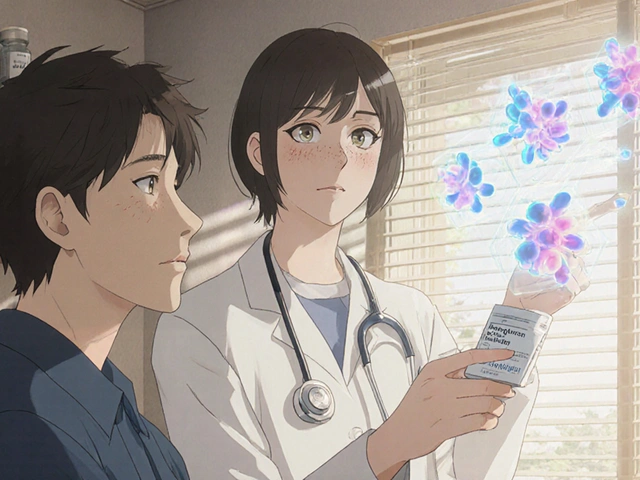
Comments
Dana Dolan
I got carboplatin last month and felt this weird metallic taste after 15 minutes. I didn't say anything because I thought it was just the chemo... turns out it was the start of a mild reaction. Nurse caught it, stopped the drip, gave me Benadryl. I'm alive.
Don't be like me. Speak up. Even if you're scared.
James Ó Nuanáin
I must say, this article is shockingly accurate-though I find it deeply concerning that American oncology units still rely on such rudimentary protocols. In the UK, we have AI-assisted symptom detection systems that flag hypersensitivity reactions before the patient even verbalizes discomfort. Why are we still using 1990s-era visual checks? It's embarrassing.
Nick Lesieur
lol so if i get a little itchy after chemo i'm supposed to scream for epinephrine? my grandma got chemo in 1987 and she just drank ginger tea and called it a day. we didn't have all this drama back then. also, who the hell has time to sit for 12 hours for desensitization? i got a job.
Angela Gutschwager
I had a reaction on dose 7. Same drug. Same clinic. Same nurse. They didn't even look at me when I said 'my throat feels tight.'
Kara Binning
I’m crying. Not because I’m scared. Because I’m SO ANGRY.
My sister had a Grade 4 reaction. They waited 12 minutes to give epinephrine because ‘they were waiting for the code cart.’ She had cardiac arrest. She’s fine now. But she’ll never trust a hospital again.
Why is this still happening? This isn’t medicine. It’s Russian roulette.
Brian Rono
Let’s be real: the entire chemo hypersensitivity paradigm is a corporate construct designed to justify more IV drips, more monitoring, and more billing codes. Epinephrine? Overrated. Diphenhydramine? Placebo with side effects. The real culprit? The fact that we’re poisoning people with synthetic molecules we barely understand.
Meanwhile, the oncology-industrial complex rakes in billions while patients are told to ‘speak up’ like it’s a TED Talk.
Andy Feltus
It’s funny how we treat chemo reactions like a medical emergency but ignore the emotional ones. The fear, the isolation, the quiet terror of knowing your body might turn on the thing keeping you alive.
Maybe we need more than protocols. Maybe we need more humanity. Not just epinephrine. Not just steroids. But someone who says, ‘I see you. I’m here.’
Dion Hetemi
You people are pathetic. You think a rash means you’re dying? I’ve had chemo for 5 years. I’ve thrown up in 14 different chairs. I’ve lost my hair, my dignity, and my Netflix password. And you’re crying over a tingling hand? Get a grip. This isn’t a spa day. It’s war. And war doesn’t care if you’re itchy.
river weiss
I'm a nurse in an oncology unit. I've seen every type of reaction. I've administered epinephrine five times. I've held hands while someone went into anaphylaxis.
Let me say this: If you're reading this and you're about to get chemo-don't be quiet. Don't be polite. Don't be 'not wanting to bother anyone.'
Your voice is your weapon. Use it. We're here to save you-not to judge you for being scared.
And if you're a patient who's had a reaction? You're not broken. You're brave.
Zac Gray
I had a reaction to paclitaxel. They did the desensitization thing. Took 10 hours. I watched three episodes of The Office. Drank a smoothie. My nurse brought me a blanket. She told me a joke about a cat and a stethoscope.
It wasn't just medicine. It was care.
And now? I'm in remission.
So yeah. You can survive this. Even if your body tries to kill you. Especially then.
Steve and Charlie Maidment
I don't get why people are so shocked about this. I mean, we're injecting chemicals that are literally designed to kill fast-dividing cells. Why would we expect the body to be chill about it? It's like asking a dog not to bark when you kick it.
And then we get mad when the dog barks.
Also, I read the whole thing. Took me 47 minutes. I'm exhausted. Can we talk about something else now?
Michael Petesch
In Japan, we have a cultural practice called 'shinrin-yoku'-forest bathing. Many patients undergoing chemotherapy are encouraged to spend time in nature before infusions. Some studies suggest this reduces cytokine stress responses.
Perhaps the answer isn't just more epinephrine, but more peace.